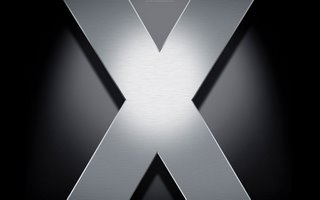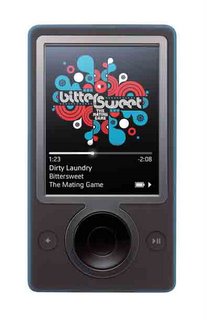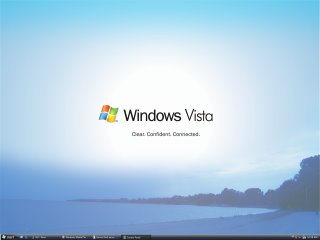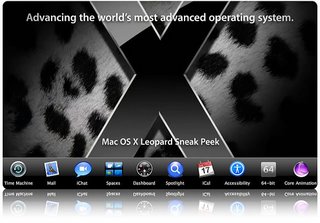Few things stoke the emotions of computer fans like a good Mac-versus-PC smackdown. So after I penned a comparison of the prices of a Mac Pro and similar Dell PC, I wasn’t surprised when my e-mail inbox and Macworld’s forum thread began filling up. As usual, some of that feedback was friendly, others…well, not so much. On both sides of the equation, there were readers making valid points—as well as people less interested in a dispassionate look at the facts.
In the wake of such criticism, helpful feedback, and valid disagreements, it’s time to follow up my original article with responses to some common questions and comments, as well as to evaluate some new points of comparison between the two systems.
My rationale
Despite what you might read on digg, I’m not an evil, Apple-paid propagandist whose sole purpose in life is to mislead lemming-like Mac users by creating dishonest comparisons designed to fool naive readers into drinking the Kool-Aid. (Trust me, I stood in front of my mirror and checked.) No, I’m someone who’s just trying to get some perspective on the relative prices of Apple’s latest hardware and comparable hardware from a popular PC vendor.
To do so, I had to make some configuration decisions—otherwise I’d have to write about five million different articles, each with different sets of configurations, and I’m afraid my hard drive just isn’t big enough for that. Could I have configured the systems more closely? Sure. But to paraphrase my boss, the point of the article was not to configure one, then the other, then back to the first one, then back to the other, until we’ve got something that’s “comparable.” Rather, it was to take Apple’s “standard configuration” Mac Pro and configure a Dell system to match it as closely as possible. (That still required a few minor tweaks to the Mac Pro—for example, the amount of RAM—to make a fairer comparison, but we left as much alone as we could.) And I was careful to explain the ways in which each system was superior to the other, given my configuration choices.
With that said, let’s run through some of the most common feedback I received, along with my responses. After that, I’ll do a few more Dell/Mac Pro comparisions, including a bit of “upgrade matching.”
Common complaints
The video card you used in the Dell was much better—and much more expensive—than the one in the Mac Pro.
You’re right. Simple as that. The Quadro FX 3450 I stuck in the Dell provides significantly better performance than the GeForce 7300GT found in the stock Mac Pro, and the Quadro’s $525 price increased the Dell’s price unfairly (although not nearly by $1000+, as some claimed).
This was one of those judgment calls: When configuring the machines, I was surprised to find that none of Dell’s less expensive video cards would support both dual- and single-link simultaneously; in other words, they can’t drive a 30-inch display along with a second display at the same time. Knowing a good number of designers—the kind of people likely to buy a Mac Pro—who use such a setup, my reaction was, “But that’s a major feature!” And so I configured the Dell with the least expensive card that could do it. (I wasn’t trying to “cherry-pick” a glitch in Dell’s video-card offerings, I promise. I really thought it was a key feature for pro users.)
Part of the blame here lies with Dell for not providing anything below the Quadro 3450 that provides such a feature; if Dell had offered a less expensive card with this functionality, I would have gladly used it instead. And in the article, I did point out that the Quadro 3450 is a better card than the GeForce 7300 GT. But in retrospect, perhaps a better approach would have been to either upgrade the Mac Pro’s video card to the much better ATI Radeon X1900 XT (a $350 option, bringing the Dell $200 closer to the Mac Pro) or to configure the Dell with a low-end card such as the ATI FireGL V3400 (a $75 option, bringing the Dell $475 closer to the Mac) and then explain in the text that the Dell was equipped with a significantly inferior video system. At least that would have given Dell a price break—without negating the fact that the Mac Pro is still much less expensive.
Some readers instead argued that I should have upgraded both machines to the NVIDIA Quadro FX 4500, since it’s the only card available for both machines. Although that’s perhaps a methodologically sound argument, the Quadro FX 4500 is so incredibly expensive—$1450 from Dell, $1650 from Apple—that I didn’t think it would make for realistic configurations. Still, for those of you who are curious, I’ll perform just such a pricing experiment below.
Why did you use a Dell in your comparison when there are so many other Windows-PC vendors out there?
I chose Dell’s workstation for three reasons. The first, and main, reason is that I was “testing” Phil Schiller’s Dell/Mac price comparison, made during the WWDC keynote. The second is that Dell is the number one computer vendor in the U.S. The third is that Macs are most frequently compared to Dells when someone makes the claim that Macs are too expensive.
The Dell includes a display, but the Mac Pro doesn’t. And Adding an Apple Cinema Display ups the Mac Pro’s price by $700.
It’s true, the Dell in my comparison included a 19-inch display—and in the text of the article, I gave the Dell a lot of credit for this fact. (I also pointed out that adding the same display to the Mac Pro would have increased the Mac Pro’s cost by $250.) Why didn’t I add the same display to the Mac Pro? Because the LCD was free as part of a promotion on the day I configured the two systems; it’s quite possible that by the time you read this follow-up, or by next week, it will no longer be free. Then we’d end up with a Mac Pro with a $250 display and a Dell without—and I’d be getting emails criticizing me for not adding a display to the Dell!
As for adding an Apple display to the Mac Pro, Apple doesn’t make a comparable 19-inch display, and Apple’s Cinema Displays are much more expensive (and of higher quality) than those Dell includes for free during promotions; I was trying to compare CPU prices, not the prices on displays or other accessories. But I’ve included a couple display configurations in my follow-up comparisons, below.
You didn’t give the Mac enough credit for [bundled software/security/design/Mac OS X/etc.].
There are many “intangibles” I could have mentioned as advantages for the Mac Pro. But as I mentioned in previous articles, it’s difficult to quantify such advantages in a monetarily meaningful way. I think it’s fair to say—and all but the most die-hard Dell/Windows fans will likely concede this point—that the Mac has clear and significant advantages here. If the price difference between the two systems was small, these advantages might be enough to sway someone towards a Mac. But the nice thing about the Mac Pro, from a Mac fan’s point of view, is that given how much less expensive the Mac Pro is than a comparable Windows PC, you don’t need to haggle over such details.
Dell’s Precision 490 is closer to the Mac Pro than is the Precision 690.
The Precision 690 has features the Mac Pro doesn’t, but the Mac Pro has key features the 490 doesn’t. For example, the 490 doesn’t support dual graphics, a feature that many “pro” users need and one that’s available on both the Mac Pro and 690; and the 490 tops out at 1.5TB of storage, compared to 2TB for the Mac Pro and 690. Overall, the 690 is closer to the Mac Pro than is the 490.
But the Dell can use SAS drives for better drive performance.
True, the 690 does can be configured to use SAS drives instead of SATA; I even pointed this out in the article. However, to do so would push the Dell into a significantly higher tax bracket. For example, to use a 146GB, 10,000rpm SAS drive instead of a 250GB, 7200rpm SATA drive would increase the 690’s price by $260; a 300GB SAS drive would cost you $460! (And the relative cost increases as you add more storage: A 500GB second SATA drive on the Mac Pro will set you back $400; a 300GB second SAS drive for the 690 would cost you another $700.) It’s nice to know that the SAS option is there for the minority of people who will actually use it—and those people should definitely go with the Dell—but SAS capability doesn’t prevent the 690 from being the most comparable Dell tower to a Mac Pro.
But the Dell 690 supports 64GB of RAM.
I hedged a bit on this spec—and noted so in the article’s notes—because the Dell site was so unclear on exactly how you get the 690 to accept 64GB of RAM. It turns out that to support 64GB of RAM, you need to purchase a special 64-bit Windows version of the 690 (which apparently also gets you a special RAM riser). Why wouldn’t you do that? Mainly because it’s only worth doing so if your main apps are 64-bit. Considering that many apps and peripherals won’t even work with 64-bit Windows, this isn’t something the typical user, even the typical pro user, is going to do. (And as a side note, the Mac Pro’s logic board supposedly—unofficially—supports 32GB of RAM right now, and it’s possible the system will support 64GB once Leopard, a 64-bit OS, is released.) In case you’re curious, the cost to equip the 64-bit Dell 690 with 64GB of RAM is a paltry $49,500—just for the RAM.
In other words, if you want to spend a lot more money, you can absolutely do things with the 690, in terms of storage and memory, that you can’t with the Mac Pro; the two aren’t perfectly comparable. However, the 690 is as close as they come in terms of being able to offer nearly all the functionality of the Mac Pro. And, in fact, the Mac Pro/Dell 690 comparison is the best one we’ve been able to do, in terms of truly comparable systems, since Apple switched to Intel processors.
Updating the comparison
With my previous article and the above comments in mind, let’s take another look at the price comparison from last week. Rather than republish the entire table from that article, I’m going to look at the differences that various configuration changes would have made—specifically, video cards and displays, the two biggest points of contention. The “Base price” in the table below refers to the Mac Pro and Dell machines from the previous article, but with stock video cards in both:
I think these variations address most of the modified comparisons readers suggested. After looking at the table, one thing becomes even more clear: The Mac Pro’s price advantage over the Dell is robust—it holds up under many different “comparable” configurations. Granted, it’s smaller in some scenarios, but the Dell never even gets within $500.
Where Dell wins
One thing you may notice, from both the original article and this one, is that although the Mac Pro itself is significantly cheaper than the equivalent Dell, Dell’s upgrades are cheaper. For example, Dell charges $300 less to add the same top-of-the-line video card and a 30-inch display. Seasoned Mac users are likely nodding their heads knowlingly right now, as this has long been the case: Apple has always charged a premium for such options, and especially for RAM, compared to both other PC vendors and third-party resellers. In some instances, such as video cards, Apple may have to pay vendors more for a Mac-compatible version, but that doesn’t make the customer feel any better after spending significantly more for essentially the same technology than their Windows-PC-owning friends.
Changing the debate
Even taking into account the high price of RAM upgrades from Apple (necessary, in this case, to make the Mac Pro “equivalent” to the Dell), the above comparisons show that the standard Mac Pro bests the Dell in price, and does so across various configuration suggestions from both sides of the debate.
Is this a sign of things to come, especially for other Mac models, now that Apple and Windows-PC vendors are using the same hardware? Possibly. But the real significance of the above comparison is that the terms—and the tone—of the Mac/Windows debate have changed in a fundamental way. Over the past decade, the biggest criticism of Macs has been related to price: They’ve been more expensive, sometimes significantly so, than name-brand Windows PCs. That’s clearly no longer the case. Although those who build their own PCs probably won’t be persuaded to buy a Mac, people in the market for a pre-configured computer are discovering that, apart from the feature-lacking low end, where Apple chooses not to play, Macs are increasingly price-competitive.
That’s not to say Macs are always going to be less expensive than a comparable Dell PC. But even when they’re not, the prices are in the ballpark. And sometimes, as with the Mac Pro, Apple's systems will have the price lead on their Dell equivalents. When’s the last time that could be said about a Mac?--macworld.com




















